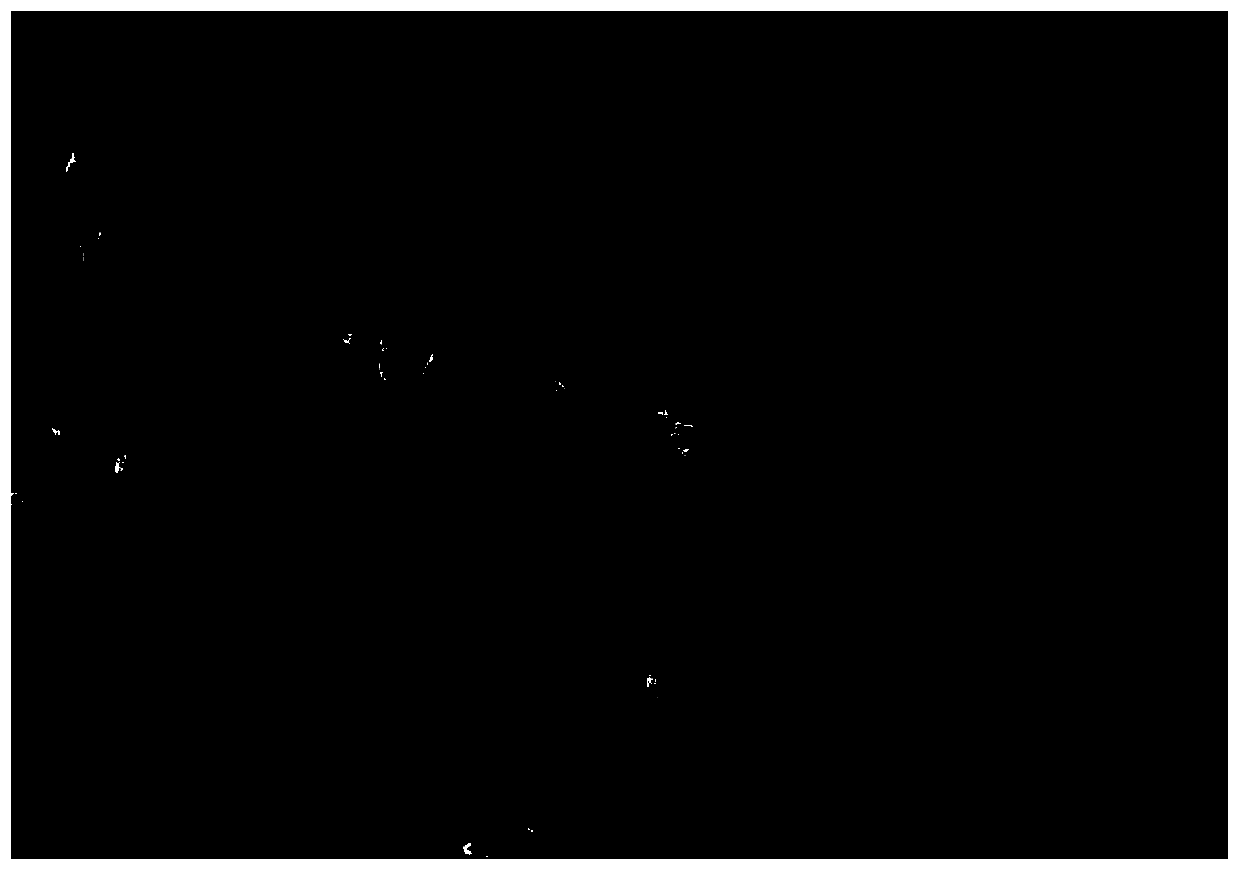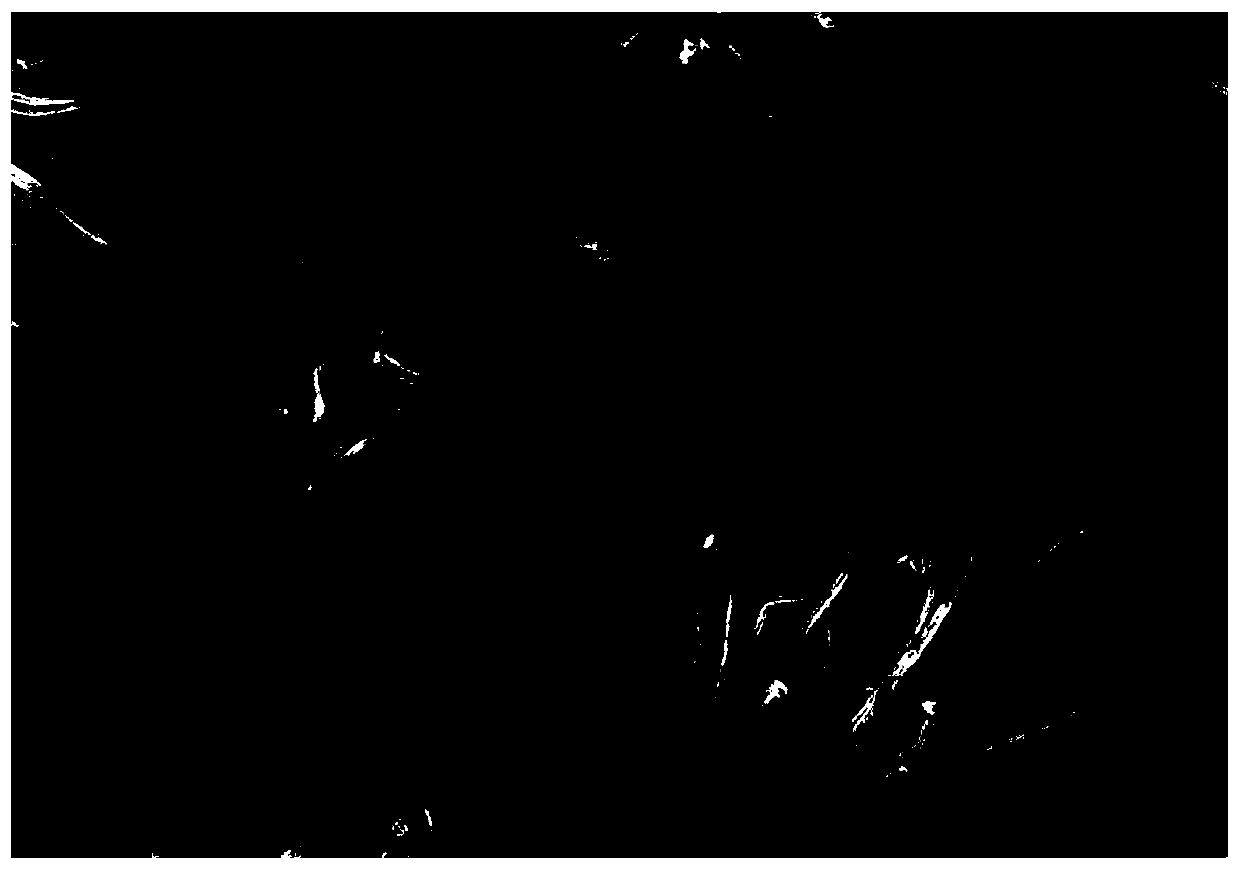Preparation and application of a copper oxide core-shell nanowire array material
A nanowire array and core-shell nanotechnology, applied in the field of electroanalytical chemical detection, can solve the problems affecting the application of enzyme-free glucose sensors, reducing catalytic active sites, and active material falling off, and achieves simple and controllable preparation methods with low detection Extreme, low-cost effect
- Summary
- Abstract
- Description
- Claims
- Application Information
AI Technical Summary
Problems solved by technology
Method used
Image
Examples
Embodiment 1
[0026] CuO / Cu 2 The preparation method of O nanowire array, comprises the following steps:
[0027] (1) Utilize the ultrasonic effect of an ultrasonic cleaner to sonicate high-purity Cu sheets (>99.9%) and high-purity Ti sheets (>99.9%) in acetone, absolute ethanol, and deionized water for 5-30 minutes respectively to remove the surface Oil stains and oxides are obtained to obtain Cu sheets and Ti sheets with clean surfaces, which are then put into an oven for drying at 80°C for use;
[0028] (2) Take the cleaned high-purity Cu sheet as the anode and the high-purity Ti sheet as the cathode, and place it in 2mol L -1 The anodic oxidation reaction was carried out in KOH aqueous solution with a current density of 2.5mA cm -2 , the reaction time is 10min, the reaction temperature is 10℃, and Cu(OH) 2 nanowire arrays;
[0029] (3) Cu(OH) obtained in step (2) 2 The nanowire array was placed in an annealing furnace for air annealing, the annealing temperature was 350°C, and the...
Embodiment 2
[0031] A method for preparing a copper oxide core-shell nanowire array material, comprising the following steps:
[0032] (1) Utilize the ultrasonic effect of an ultrasonic cleaner to sonicate high-purity Cu sheets (>99.9%) and high-purity Ti sheets (>99.9%) in acetone, absolute ethanol, and deionized water for 5-30 minutes respectively to remove the surface Oil stains and oxides are obtained to obtain Cu sheets and Ti sheets with clean surfaces, which are then put into an oven for drying at 80°C for use;
[0033] (2) Take the cleaned high-purity Cu sheet as the anode and the high-purity Ti sheet as the cathode, and place it in 2mol L -1 The anodic oxidation reaction was carried out in KOH aqueous solution with a current density of 2.5mA cm-2 , the reaction time is 10min, the reaction temperature is 10℃, and Cu(OH) 2 nanowire arrays;
[0034] (3) Cu(OH) obtained in step (2) 2 Nanowire array placed in 50mmol L -1 In the absolute ethanol solution of 1,3,5-benzenetricarboxyli...
Embodiment 3
[0037] A method for preparing a copper oxide core-shell nanowire array material, comprising the following steps:
[0038] (1) Utilize the ultrasonic effect of an ultrasonic cleaner to ultrasonicate high-purity Cu sheets (>99.9%) and high-purity Ti sheets (>99.9%) in acetone, absolute ethanol, and deionized water for 5 to 30 minutes, respectively, to remove the surface Oil stains and oxides are obtained to obtain Cu sheets and Ti sheets with clean surfaces, which are then put into an oven for drying at 80°C for use;
[0039] (2) Take the cleaned high-purity Cu sheet as the anode and the high-purity Ti sheet as the cathode, and place it in 2mol L -1 The anodic oxidation reaction was carried out in KOH aqueous solution with a current density of 2.5mA cm -2 , the reaction time is 10min, the reaction temperature is 10℃, and Cu(OH) 2 nanowire arrays;
[0040] (3) Cu(OH) obtained in step (2) 2 Nanowire array placed in 50mmol L -1 In the absolute ethanol solution of 1,3,5-benzene...
PUM
 Login to View More
Login to View More Abstract
Description
Claims
Application Information
 Login to View More
Login to View More - R&D
- Intellectual Property
- Life Sciences
- Materials
- Tech Scout
- Unparalleled Data Quality
- Higher Quality Content
- 60% Fewer Hallucinations
Browse by: Latest US Patents, China's latest patents, Technical Efficacy Thesaurus, Application Domain, Technology Topic, Popular Technical Reports.
© 2025 PatSnap. All rights reserved.Legal|Privacy policy|Modern Slavery Act Transparency Statement|Sitemap|About US| Contact US: help@patsnap.com



